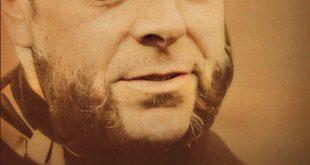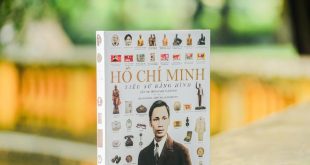Art, at its core, is often a reflection of the human experience. But what happens when the lines between reality and imagination blur, when the raw material of lived experience becomes intertwined with the fictional narratives we create? This fusion of fiction and biography offers artists a unique canvas, a space where they can explore personal truths, experiment with perspective, and ultimately, discover newfound creative freedom. It’s like having your cake and eating it too, isn’t it? Blurring those lines, that’s where the magic really happens.
The Allure of Autobiographical Fiction
Exploring Personal Narratives Through a Fictional Lens
Ever thought about turning your life into a story? Not just a straight-up autobiography, but something… different? Autobiographical fiction gives you the chance to take those real experiences – the good, the bad, the utterly embarrassing – and mold them into something new. You can change names, tweak events, and even invent entire characters to explore the themes that resonate most deeply with you. It’s about finding a different way to say what’s been on your mind.
Benefits of Blending Reality and Imagination
Why even bother mixing fact and fiction? Well, for starters, it can be incredibly liberating. It lets you distance yourself from the raw emotion of your own life while still mining it for creative gold. You might find hidden truths, untangle complicated feelings, and gain a whole new perspective on events that shaped you. Plus, it’s just plain fun! Who wouldn’t want to reimagine that disastrous first date or that time you accidentally set off the fire alarm in college? (Okay, maybe not fun at the time, but definitely fodder for a good story later!) And let’s not forget, sometimes reality is stranger than fiction. Or is it the other way around? Hmm…
Biographical Fiction: Reimagining Historical Figures
Breathing Life into the Past Through Creative Interpretation
Moving beyond our own lives, biographical fiction takes on the challenge of bringing historical figures to life. But instead of sticking strictly to the facts, it fills in the gaps, explores motivations, and imagines the inner lives of these individuals. Think about it: we only know so much about historical figures. What were they really like? What kept them up at night? Biographical fiction lets us play detective, piecing together clues to create a more complete, compelling picture.
Ethical Considerations in Biographical Fiction
Now, before you go wild rewriting history, there are some things to keep in mind. With great power comes great responsibility, right? When you’re dealing with real people, even those long gone, you need to be mindful of their legacy and their families. It’s a delicate balance between creative license and respecting the truth. Accuracy matters, to some extent. You wouldn’t want to portray Marie Curie as a tap-dancing clown, for example. Or would you? (Okay, maybe that’s a bit extreme, but you get the idea).
Techniques for Fusing Fiction and Biography
Using Memory as a Catalyst for Storytelling
Memory is a funny thing. It’s not a perfect recording of events; it’s more like a mosaic, pieced together from fragments of experience, emotion, and imagination. When you’re fusing fiction and biography, tap into those memories. Explore the feelings associated with them. Let them guide you, even if they lead you down unexpected paths. Don’t be afraid to embellish, to exaggerate, to create something new from the raw material of your past.
Employing Fictional Devices to Enhance Emotional Impact
Don’t just rehash the facts; use the tools of fiction to amplify the emotional impact of your story. Dialogue, character development, plot twists – these are all weapons in your creative arsenal. Use them wisely! Think about using symbolism, too. It can add layers of meaning and resonance to your work. Just remember, the goal isn’t just to tell a story, but to make your reader feel something.
Examples of Successful Fusions
Case Study 1: A Deep Dive into a Specific Work
Let’s take “The Things They Carried” by Tim O’Brien, for example. It’s a collection of interconnected stories about the Vietnam War, and it blurs the line between fiction and memoir in a really fascinating way. O’Brien uses his own experiences as a soldier to inform the narrative, but he also admits to making things up, to exaggerating, to creating a sense of truth that goes beyond factual accuracy. It’s a powerful exploration of trauma, memory, and the nature of storytelling itself.
Case Study 2: Another Illustrative Example
Another great example is “Beloved” by Toni Morrison. While based on the true story of Margaret Garner, an escaped slave who killed her own daughter to prevent her from being returned to slavery, Morrison weaves a powerful and haunting fictional narrative around this historical event. The novel explores the lasting impact of slavery on individuals and communities, using elements of magical realism to delve into the psychological and emotional depths of its characters. It’s a testament to the power of fiction to illuminate historical truths.
Challenges and Pitfalls
Avoiding Self-Indulgence and Maintaining Artistic Integrity
One of the biggest dangers of autobiographical fiction is falling into the trap of self-indulgence. It’s easy to get caught up in your own story and lose sight of the bigger picture. Remember, your story needs to resonate with readers, not just serve as a personal therapy session. (Although, let’s be honest, writing can be pretty therapeutic!) Keep your ego in check and focus on crafting a compelling narrative that speaks to universal themes.
Navigating the Fine Line Between Fact and Fiction
The line between fact and fiction can be blurry, and that’s part of what makes this genre so exciting. But it’s also important to be aware of the potential pitfalls. Misrepresenting historical events or exploiting personal relationships can damage your credibility and alienate your audience. Be thoughtful, be respectful, and always be aware of the choices you’re making.
Finding Your Own Creative Freedom
Embracing Vulnerability and Authenticity
Ultimately, fusing fiction and biography is about finding your own voice, your own truth. It’s about being brave enough to explore your own experiences, to confront your own demons, and to share your unique perspective with the world. Don’t be afraid to be vulnerable, to be honest, to be yourself. Authenticity is what will truly connect you with your readers.
Experimenting with Different Approaches and Styles
There’s no one right way to fuse fiction and biography. Experiment with different approaches, different styles, different voices. See what works for you. Maybe you’ll write a straightforward narrative, maybe you’ll create a surreal dreamscape. The possibilities are endless. The important thing is to keep exploring, to keep learning, and to keep pushing the boundaries of your own creativity.
So, what’s the takeaway? Fusing fiction and biography isn’t just a writing technique, it’s a way to unlock new levels of creative expression. It’s about taking your own life, or the lives of others, and transforming them into something meaningful, something powerful, something truly unforgettable. So, go ahead, give it a try. You might just surprise yourself with what you discover. And hey, if you end up writing something amazing, be sure to send it my way! I’d love to read it!
 Cloudabouts
Cloudabouts



